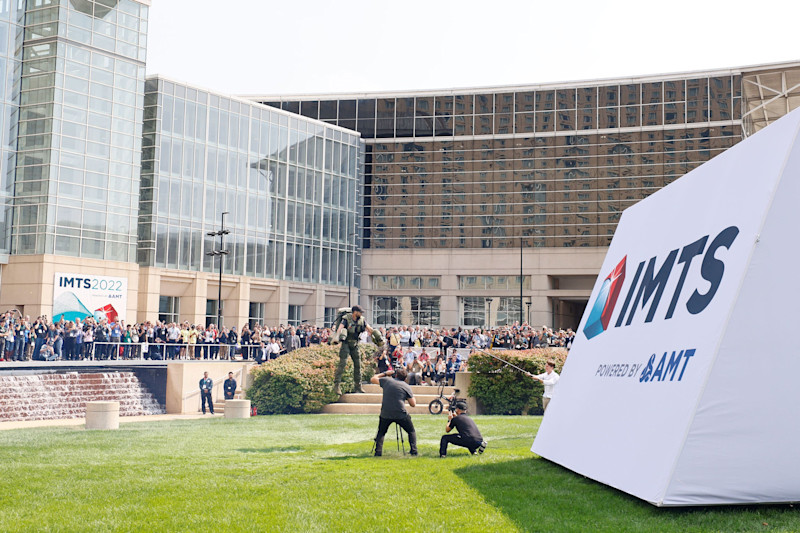The Previews
Were this a movie, it would be PG-13-rated. Possibly R.
The macroeconomic situation in the United States is not particularly good, and in the near-term, it isn’t going to get a whole lot better.
Hard stuff.
While movies are often fanciful, for manufacturers, the prevailing conditions are all too real. But they can be addressed and managed.
A recent McKinsey report, “Delivering the US manufacturing renaissance,” opens, “US manufacturing may be poised for an overhaul and a rebound, with a potentially significant impact on the nation’s overall economy.” Which certainly sounds promising.
It goes on to point out that in the United States, “manufacturing accounts for $2.3 trillion in GDP, employs 12 million people, and supports hundreds of local economies.”
What’s more, manufacturing is responsible for “20 percent of the nation’s capital investment, 35 percent of productivity growth, 60 percent of exports, and 70 percent of business R&D spending.”
It describes manufacturing in the United States as being at “an inflection point,” and that “Analysis by the McKinsey Global Institute suggests that restoring growth and competitiveness in key manufacturing industries could boost US GDP by more than 15 percent over the rest of the current decade.”
At this point you might think to yourself that this information should be G-rated – not only for general audiences but “Great!”
But the McKinsey analysis goes on to point out that while 44% of people in various manufacturing sectors say they have increased their regional sourcing as a consequence of the supply chain disruptions caused by the COVID-19 pandemic, and 51% say they think the approach (aka reshoring) will be relevant going forward, the consultancy warns that this is not going to be easy and that in order to accomplish the transition, it will require that companies have a “solid financial and operational plan that is aligned at all levels of the organization and spells out detailed actions and clear responsibilities for all stakeholders.”
People need to know what is going on because the task is tremendous.
One scenario laid out by the analysts presents a “hypothetical midsize US consumer electronics company with a highly globalized production network.” Not an unusual organization.
Going to local production for this fictitious company will, as a result of rising factor costs that will occur during the next seven years, have its margins cut by six percentage points over the same time period. Add in the costs of carbon emissions and “likely supply chain risks,”* and five more points of margin are removed. And “Even aggressive levels of automation would still leave the manufacturer with a seven-point margin reduction.”
All that said, the analysts point out: “Doing nothing may not be an option.”
The transformation that may be required of manufacturers could take up to 20 years, and to achieve that transformation, “creativity, commitment, and significant innovation” are required.
Which brings us back to the R-rating: This is hard. Not for the weak of heart or for those not willing to make a complete commitment. Any margin reduction – to say nothing of seven points – is tough to take. But not as much as Chapter 7 or 11.
The Lead Actress
Mary Barra is the chair and CEO of General Motors, where she has worked for some 33 years. She began at the company in 1980 as a Kettering University co-op student at Pontiac Motor Division (R.I.P., 2010 – after 84 years in operation).
Her first full-time job at GM was in 1985 as an acting superintendent, maintenance and tooling/senior plant engineer. In her career Barra has had roles in manufacturing planning, as plant manager, and as vice president of global manufacturing engineering.
All of which is to point out that Barra is an executive steeped in manufacturing. She not only knows what line rates are but what makes them happen, from servo drives to skilled trades.
Under Barra’s direction, GM has made or announced the following investments in order to achieve the capacity to produce 1 million electric vehicles in North America by 2025:
$2.2 billion, Factory ZERO, Detroit/Hamtramck
$4 billion, Orion Assembly, Orion Township, Michigan
$2 billion, Spring Hill Manufacturing, Spring Hill, Tennessee
$154 million, Lockport Components, Lockport, New York
$491 million, Marion Metal Center, Marion, Indiana
And with partner LG Energy Solution:
$2.6 billion, Ultium Cells, Lansing, Michigan
$2.3 billion, Ultium Cells, Spring Hill, Tennessee
$2.3 billion, Ultium Cells, Warren, Ohio
In her letter to shareholders reviewing 2021, Barra wrote, “As we move through the year [2022], the massive scale of our transformation and the value it will deliver will become even more clear.”
That GM is investing in manufacturing cannot be disputed. Arguably this is greater than a generational spend.
But what must be kept in mind about this is that the investment in electric vehicles is coming from somewhere, and one part of that “somewhere” is the internal combustion engine.
The multi-decade life of an internal combustion engine program and GM’s intentions to be carbon neutral in its products and operations by 2040 underscore the importance of the multibillion-dollar investment in electric vehicles.
(Keep in mind that Ford Motor has completely restructured its organization, with the primary elements being Ford Model e division, which will be dedicated to electric vehicles, and Ford Blue, the mission of which is to build out the company’s ICE vehicles while serving “as the engine that supports and powers Ford’s future” – it will be a source of funding for the electric side of the business. Ford is investing $50 billion in EVs through 2026.)
What’s more, with developments like the state of California – which accounts for about one-eighth of all new car sales – banning the sale of new ICE vehicles after 2035, new engine programs are not particularly fiduciarily responsible.
And realize that all global vehicle manufacturers are facing the same situation. For those that have significant sales in the European Union, know that although there are some carve-outs and exceptions, new ICE sales are to be banned there in 2035 as well.
In the U.K. a ban will go into effect in 2030. In fact, countries from Norway to the Netherlands, South Korea to Singapore, have future ICE bans on their books.
So, what does this mean?
For one thing, the amount of machining that is associated with making engines – milling, drilling, turning, honing, broaching, grinding, etc. – and all of the components that constitute them – valves, cams, cranks, blocks, heads, pistons, etc. – is going to decrease. What’s more, the nature of transmissions for electric vehicles is entirely simpler than the step-gear transmissions that are found in the vast majority of cars, trucks, and SUVs on the road right now.
So, traditional engine plants are going to decrease in number, as will the suppliers to those plants.
In mid-September the Business Roundtable released its Q3 CEO Economic Outlook Index, a composite that combines CEO projections for sales, capital spending, and hiring over the next six months. The top line is that the overall index declined 12 points from Q2 2022.
A read on the situation:
“Global economic uncertainty continues to temper CEO sentiment for domestic plans and expectations, as reflected in this quarter’s survey results. In the face of ongoing economic and geopolitical challenges, U.S. policymakers should pursue pro-growth policies that will strengthen the economy and generate upward mobility for all Americans. We must remain steadfast in putting in place the building blocks for future economic growth.”
That’s Mary Barra. She also happens to be the chair of the Business Roundtable.
The “building blocks for future economic growth” are arguably the sorts of things that go into a Cadillac LYRIQ electric SUV, not a Cadillac Coupe de Ville.
For companies that are unwilling to undertake the transformations suggested by the aforementioned McKinsey analysts, the situation will be scarier than “The Exorcist” (yes, R-rated).
The Denouement
The challenge faced by manufacturers is daunting. But for those who show the necessary resilience and agility; who are willing to make the investments in automation, digitization, labor, and logistics; and who change the nature of their organizations to be more proactive than reactive, the benefits can be great.
Almost coincidental with the release of the Business Roundtable survey in September, the World Bank released a report titled “Is a Global Recession Imminent?” The answer to that question isn’t entirely clear, as on the one hand the report points out that although global growth forecasts from earlier in the year have been “downgraded significantly,” they “do not point to a global recession in 2022-23.” And on the other, the bankers have determined that there are two developments that are symptomatic of a global recession: a weakening of global growth in the previous year and a sharp slowdown or recession in several major economies.
They found that the first has already occurred, and the second “may be underway.”
While that may make you feel like heading to the exits, a statement from World Bank President David Malpass that was made with the release of the report should provide some sense of solace:
“To achieve low inflation rates, currency stability and faster growth, policymakers could shift their focus from reducing consumption to boosting production. Policies should seek to generate additional investment and improve productivity and capital allocation, which are critical for growth and poverty reduction.”
Boost production. Improve productivity. That’s what makes all the difference.
If you have any questions about this information, please contact Gary at vasilash@gmail.com.









